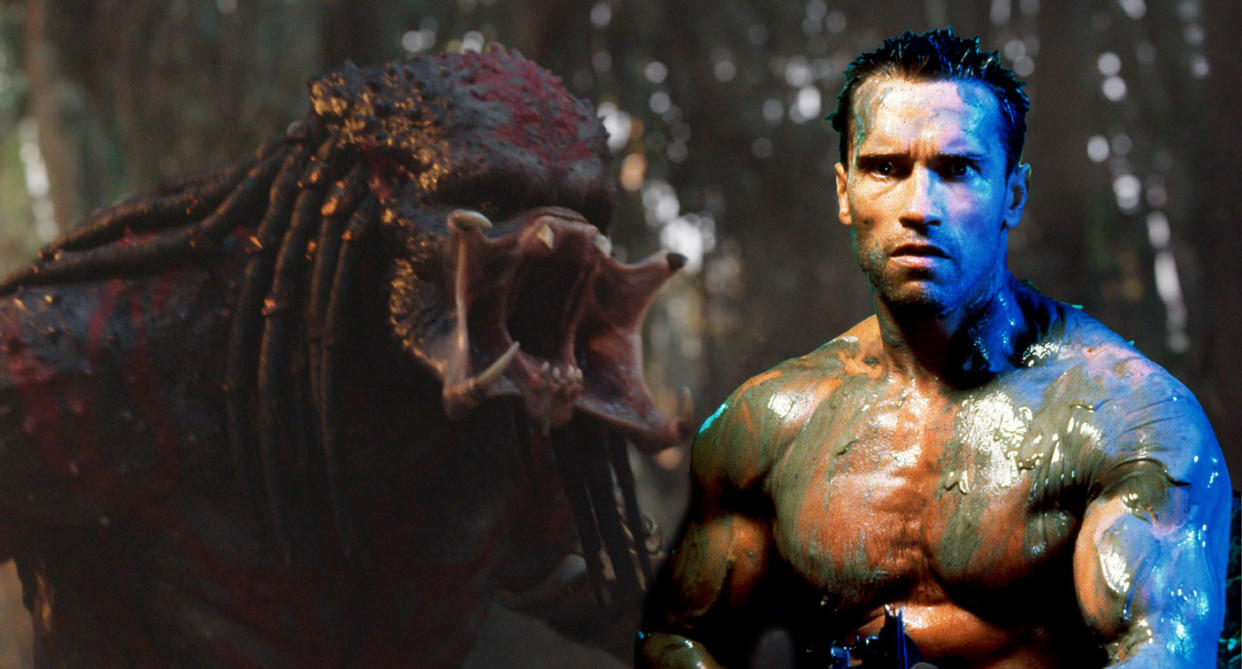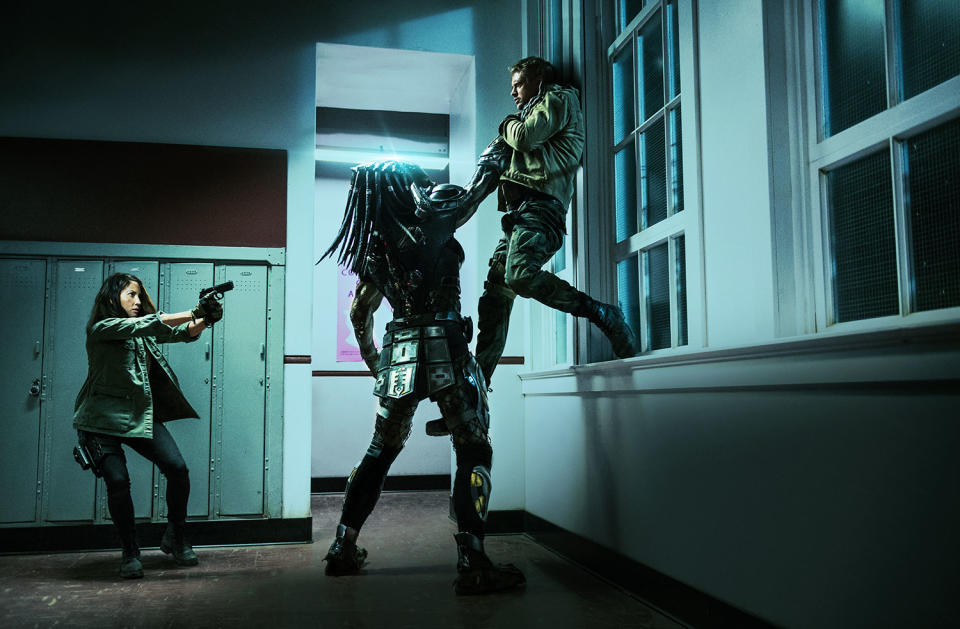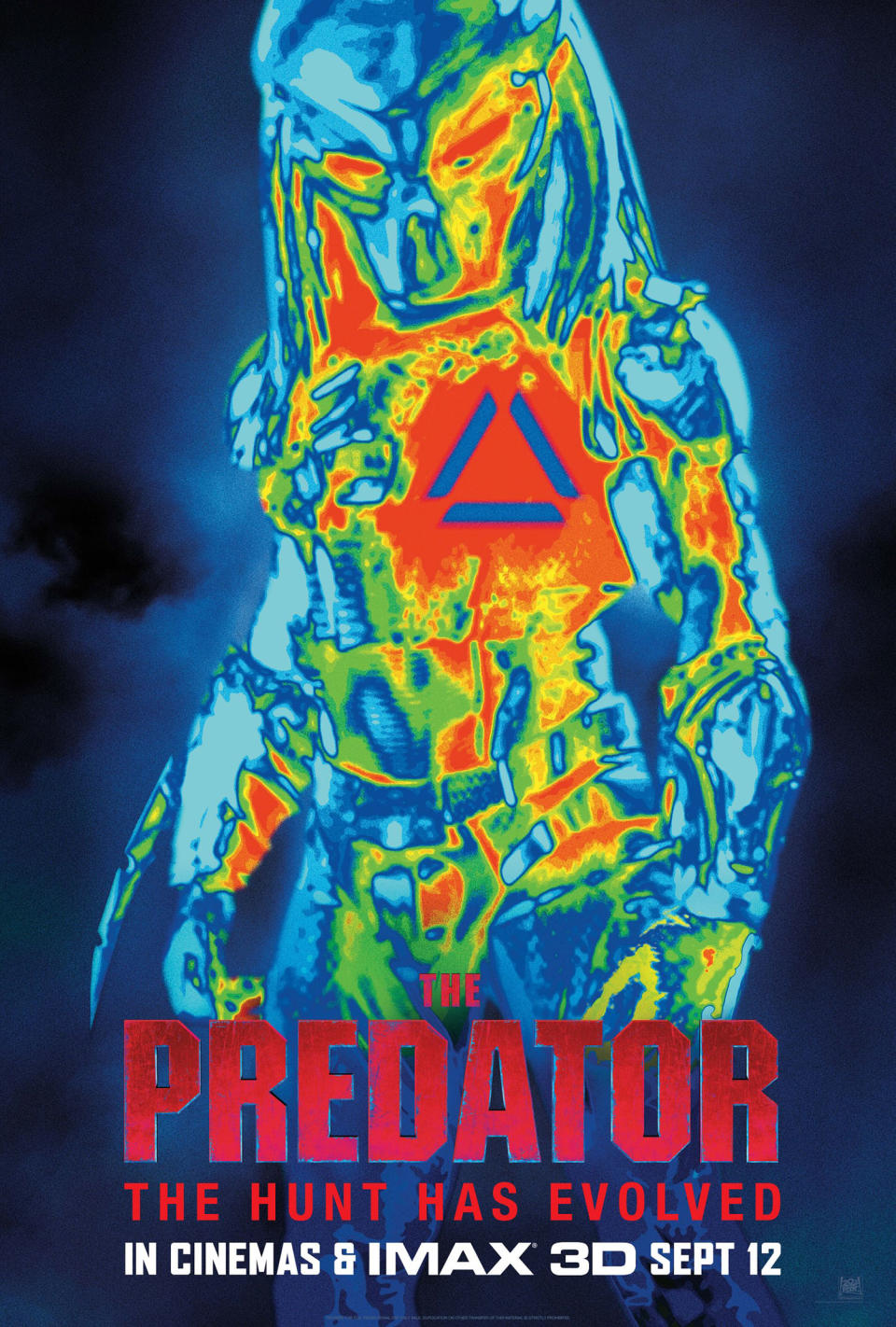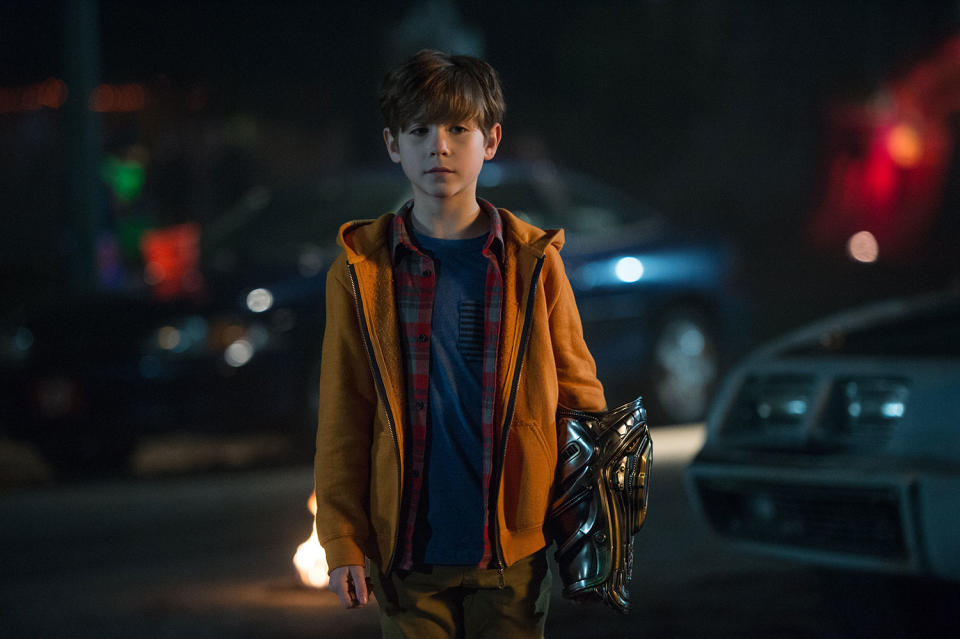'The Predator': Why Arnold Schwarzenegger turned down a role (exclusive)

Arnold Schwarzenegger turned down the opportunity to appear in The Predator because the role he was offered was too small, says director Shane Black.
In 2016, Schwarzenegger told thearnoldfans.com he was meeting with Black “for lunch” to discuss the latest sequel to his hit 1987 film, and now we can reveal why talks fell apart.
“There were a couple of ideas to include [Arnie in The Predator], mostly in the third act,” Black tells Yahoo Movies UK.
“And the studio wanted, I think, something a bit fresh, that didn’t rely on solely on Arnold’s reemergence, but they were open to the idea to the notion of having him in, in a smaller role.”
“I was fine with that, but it did present a problem, because when you call Mr. Schwarzenegger you don’t want to say: ‘Hey, we got this smaller role for you if you want it?’. I felt embarrassed to ask him, right?”
“He said: ‘Well, if I was featured more, yeah, but what you’re suggesting is that you’re creating this new thing and just using me to bless it.’ And so [I said], ahem… yes. And so I was not surprised when he said: ‘Look, I wish you luck, but that’s too small a role for me’.”
The reticence of 20th Century Fox to make the return of Schwarzenegger as Major Alan “Dutch” Schaefer a key part of the big budget sequel is understandable. Despite remaining a hugely popular public figure, Schwarzenegger seems to have lost his box office appeal since he returned from politics.
His biggest post-politics hit is Terminator Genisys which, despite earning £340m at the box office, didn’t perform well enough to earn a sequel (the upcoming Terminator 6 will ignore the events of Genisys).
We also spoke to Black (in an interview conducted before the recent story about a scene featuring a sex offender being cut was published by the LA Times), about how The Predator changed during the extensive reshoots, about how you keep the 30-year-old franchise, and we also challenge him on the portrayal of mental illness in the film.
Yahoo Movies UK: How are you?
Shane Black: I’m OK. I’m hanging in.
You must be over the moon now that The Predator is all wrapped up and ready to go?
Err, yeah, I’d love to bid goodbye to this thing. As sad it sounds, it’s been a long road. If it does well, great, but my lord, it’s been seemingly forever.
When you came on board the film, was there an outline in place? Or did you come in blind, and given free rein to do what you wanted?
I don’t know if we were free to do whatever we wanted, but we were certainly free of a pre-existing idea or script.

They said, ‘we’re looking for a shape here. We’re looking for you and Fred Dekker – my co-writer – to generate a kind of stew here of elements that uses properly the predator and gives the context that’s really fresh, but also hopefully is reminiscent of the energy and fun of the first picture. What can you do to reinvigorate this franchise?’
They said at the time, ‘we want to restart the Alien franchise with Ridley, and we’d love to get the Predator going as well’.
We didn’t want to go as gloomy and existential as the Alien franchise seemed to be going. My take on it was that we could be scary but have a little more fun.
The original film has such a killer premise, can you talk me through how you and Fred nailed down the premise for this film?
Well, there were a couple of obstacles facing us. Forget about the fans who worship the first film, and will view almost anything as inferior: it’s a very high bar.
But there are other things too, which is that the predator itself, that great iconic costume and the makeup and the dreadlocks, the things you don’t want to change too much because they’re right. It’s not broke, don’t fix it.
They have become so familiar at this point after 30 years that you see the predator walking around at Halloween or comic con. You’ve got masks in stores, it’s on t-shirts, it’s everywhere.
So in the first movie, whereas you have the ability to generate scares just by revealing him, now you can’t really scare people just by showing you the predator’s face. It’s too familiar. But what you can do I think is remind people why they should be scared of that face.

In other words, to have the predator take us back into the world where you remember the first film, how vicious and how deadly and how mysterious he was, so you start to remember ‘oh yeah, this isn’t just a t-shirt, I remember now. The predator, that’s why we’re scared when we see that face, because he’s a really creepy, fast, lithe, agile, ultra-deadly predator’ and you start to take it seriously again. You get back into it. You reawaken the sense of why we love this character again. That was the initial task.
There was a sentence that occurred to us, early on, that I think was very helpful, and the single sentence which led to the creation of the stew was ‘this time, they’re hunting each other’.
And I thought, ‘OK, I don’t know where that goes, but there’s certainly value in that notion’. That there’s a predator that’s been assigned to take out another one. And from there we started to generate the notion that maybe after 30 years of under-the-radar visitations that have largely gone either unseen or disbelieved, but this time humanity has taken notice.

There’s enough of them, and they’re happening with enough frequency that humankind has actually established a watchpost to monitor the skies and watch for the next incursion, and we wanted to make the story about the next incursion.
We wanted to keep it subjective too, so it’s through the eyes of the humans. So it becomes more of a ‘watch the skies’ movie, where something mysterious happens that we have to figure out, and it’s not so much from the point of view of the predators.
At some point we’ll go to predator world and we’ll see everything about them, but this one it seemed to me that we wanted to stay more with the humans.
It sounds like the final third has been the most problematic for you, and that has seen the most change, is that fair?
Yes.
What’s the story behind all the changes, and how much was changed in the final act?
Well, the structure remained largely the same. There was a proponent of working with the predators, played by Edward James Olmos, and there was a suggestion that maybe he was trying to recruit the first predator in the movie.
And when we went back we thought that that was one bad guy too many, one character too many in retrospect, and regretfully we removed his role from the movie and just let Sterling K Brown carry it solo.

Also the Ark site scene, there was a whole different… it was the same set, the same sequence basically, but all set during the day with them attacking the Ark and freeing the kid, and running away with the predator chasing them but it was all daylight. It just… we started to do our effects work, and it looked kind of cheap in a way. It looked… it didn’t really feel like a big expensive movie when the predators are just running around in daylight like that.
We could have finished the film like that, honestly we could have, but I just didn’t think it would work as well. Thankfully, I have to credit 20th Century Fox, this was a big, fairly expensive deal to turn that back into night time, and they went along with it.
We went up and rebuilt it on a different location, we put the ship back in, restaged the the attack on the ship, and the rescue of the kid, all at night.
With there being so many changes made, do you look at this film and think: ‘This is the film I set out to make’?
Yeah. For me, it’s a matter of condensing and keeping the best parts. We would have cut it down anyway, to just boil it to the best, most accessible, character-driven parts. The only thing that’s actually missing in terms of the film that I intended originally to make in terms of excitement was Edward James Olmos running the show. As great as he is as an actor, I honestly don’t miss it in the story. It’s not his fault, it’s just boiled down more, and it actually works better I think.
What surprised me about the film is how much of the film is spent dealing with mental illness, with the Loonies and with Rory – what’s the meaning behind that in terms of the predator?
What we were trying for was to generate a group that was sort of the opposite of the group in the first film, to some extent. The first Predator film, they were very slick, hyper-savvy, hyper-aware, ultimately powerful super soldiers with big muscles, and impossibly ridiculously large guns.
And in this one I wanted to get a relatable group of the more forgotten, more marginalised soldier who was very good at what he does, but has forgotten that, and has to be reminded. The idea of the misfit, the least likely guy to go against the predator. And that extended to the little kid who was a misfit, who was bullied at school, and doesn’t know how to relate to society, to the misanthropic scientist who’s just more comfortable working with animals that she is relating to human beings.
The misfit among whom lies the key the future, the evolution of the species, is not in the perfect super soldier, it’s in the little boy who was bullied at school.
That was the notion. Those who have been sidelined often have more to give, they just need to be reminded of the potential that exists within them, to evolve to their full capacity, to their capabilities.
The predator also was given that evolution as it were, except not necessarily in a good way perhaps.
Rory having Aspergers is a very sensitive subject to tackle in a big film like this, why was that important to have in the story?

Because I think there’s a case to be made that people who have what is viewed as a disability are actually the most valuable members of our society. There are those among us who consider schizophrenia to just be another form of existence and not necessarily even… there’s one theory that they’re seeing something that other people simply don’t.
I personally suffer from tourettes disease. I bark and chirp sometimes so I’ve had to play with that, and I thought I always try to keep a sense of humour about it. It doesn’t show up all the time, but when it does it’s usually with a girlfriend or something, so I try to keep a sense of humour about it.
What’s next for you? Is Doc Savage still happening?
I don’t think Doc Savage is going to happen. I wanted to set it in the 1930s and that didn’t seem to go over very well. But we’ll see what happens. I don’t know yet what i’m going to do except at this point take a fairly extended break.
The Predator is in cinemas and IMAX 3D from 12 September.
Read more
A brief history of Predator
First look at Hobbs & Shaw
Blockbuster reopening in the UK

